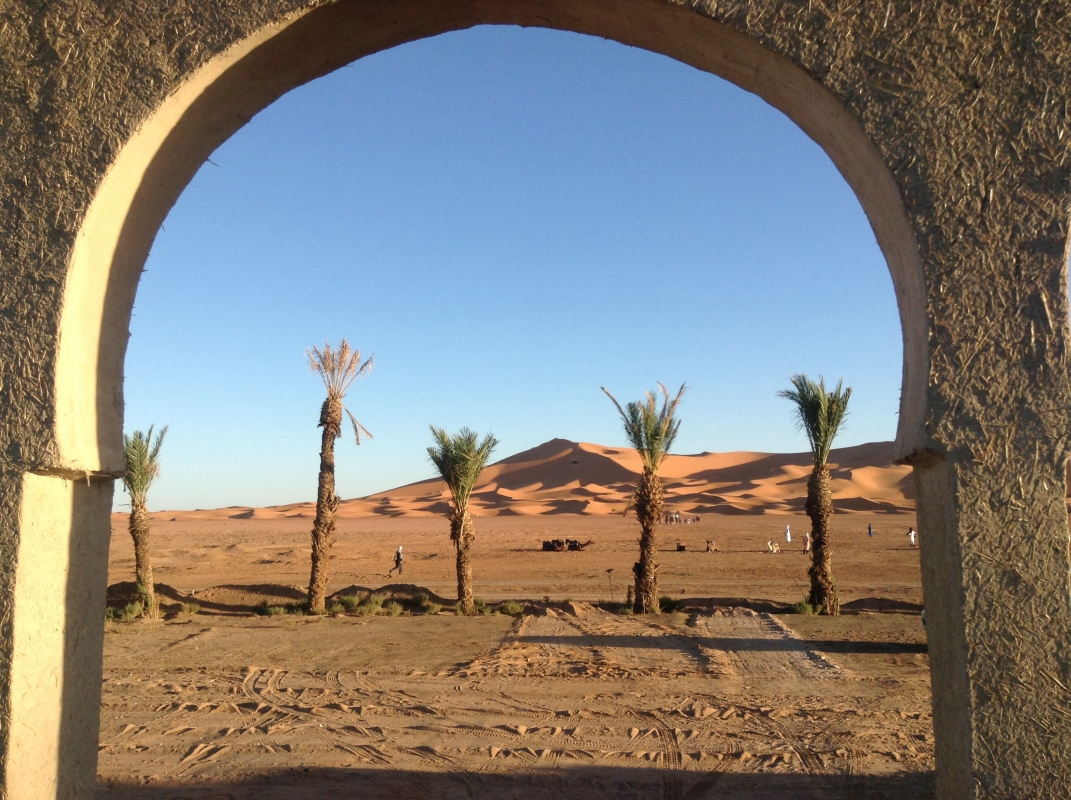

By Lynn Sheppard
Essaouira – Many visitors to Morocco are surprised to learn of the country’s cultural diversity. Although today a majority Arab Muslim country, Morocco has a significant Jewish past (and present) as well as indigenous Amazigh (also known as Berber) population who pre-date the Arab immigration.
A fascinating aspect of Morocco’s history is where Berber and Jewish history and culture intertwine. Transliteration of Berber language is a recent innovation and so Berber history was seldom recorded. In fact, it is often due to enthusiastic members of the Moroccan Jewish diaspora and other chroniclers of Jewish history that we can gain an insight into the peaceful and fruitful coexistence between Berbers of Jewish and Muslim faith.
Although travelers to Morocco will meet Moroccans of Berber origin almost everywhere, their homelands are the rural and often mountainous areas such as the Atlas and Rif mountains and the desert. Recent political movements to recognize their indigenous heritage, languages and culture have drawn on the similarities across three main geographical and linguistic Berber groups in Morocco, which together form around 40% of the population. The call for greater recognition and autonomy has drawn on a broader movement across North Africa and the Sahara among the Amazigh (plural: Imazighen, meaning “free men”).
There are two theories regarding the existence of a distinctly Jewish subgroup of Berbers. Whether indigenous Moroccan Berbers adopted the Jewish faith and culture, and/or Jews migrated to North Africa and adopted the Berber language and culture, the layers of Morocco’s cultural patchwork probably pre-date the Roman era.
Jewish Immigration to North Africa
Historians refer to several waves of Jewish immigration to North Africa, beginning potentially with the destruction of Solomon’s Temple after the siege of Jerusalem in 587 BC but certainly underway by the time of the Jewish Rebellion in the Middle East against the Romans, which began in 66 AD. Jews are said to have flown major cities such as Fes and Meknes to the Atlas mountains during persecution by the Almohad Caliphate which ruled North Africa and Al Andalus (including parts of the Iberian peninsula) during the 12th and 13th centuries. The Almohads, Berber Muslims, were significantly less tolerant of non-Muslims than their predecessors. In a historical twist, it was in these cities that many Jews fleeing the Spanish Inquisition in the late 15th century found shelter and success.
Despite religious differences, the proximity of Muslim and Jewish neighbours within rural Morocco created closely-knit communities, meaning that crafts, customs, culture and language were exchanged to create a uniquely Moroccan mix. Although today there are virtually no Jews living in rural Berber communities, their legacy is visible all over the country if you know where to look.
Rural Roots
As well as the Mellah (Jewish quarter), cemeteries and synagogues found in many Moroccan cities such as Casablanca, Rabat, Marrakech and Essaouira, there are also events and sites of Jewish religious and cultural significance in rural areas. The moussem (pilgrimage) of Ait Bayoud in Essaouira Province, held every Spring, is one such example. Further South, an ancient Jewish Berber community is recorded in Oufrane, in the Souss region (not to be confused with the ski resort Ifrane in the Middle Atlas), where Jews are said to have lept into fire rather than convert to Islam in the 18th century. Nearby, significant sites can still be visited in Ighil n-Ogho near Talouine (in the Anti Atlas and famous for saffron) and in Arazane (30km from Taroudant). In the Ammeln Valley near Tafraoute, locals claim certain tribes are still referred to as Aït-Aouday (“Tribe of the Jews”), although the Jews are long gone.
Further east towards the Algerian border, is the town of Amezrou, which sits on the caravan route up from sub-Saharan Africa, along which camels once carried goods from the Jewish enclave at Timbuktu to the port of Mogador (Essaouira). Here, Berbers still practice the same silversmithing techniques introduced by the Jews. The khamissa, in the shape of a hand, used to ward off the evil eye, is a symbol based on a pentagram which unites Jewish, Muslim and more ancient customs and is still cast in Berber silver today.
Moving north east, along the famous ‘route of a 1000 Kasbahs,’ the Jewish Berber community of Tinghir, on the east side of the Atlas mountains, was documented in Kamal Hachkar’s recent film, ‘Tinghir-Jerusalem – Echoes from the Mellah.’ In the town, there were certain trades practiced by Jews and others by Muslims. Each community had its places of worship but they shared their festivities, their language – the good times and bad – for over 2000 years right up until the 1960s.
Heading back across the high passes into the mountains, there are many remote communities of the High Atlas where traces are still visible of Jewish Berber communities. The High Atlas Foundation, which is supported by Journey Beyond Travel, today arranges for Jewish Community of Marrakech to loan land near Jewish holy sites for the development of organic fruit and herb nurseries for the benefit of impoverished local communities. Such projects are present at Akraich (Al Haouz Province) and are also being developed in Azilal Province. In this latter province, the Ait Bougemez Valley (Morocco’s so-called ‘Happy Valley’) exhibits a fascinating element of Berber history. A communal granary (in the local Berber dialect, agadir) sits on the summit of a strangely pyramidal hill that was once the site of pilgrimages to the Jewish saint, Sidi Moussa. The granary, now UNESCO-registered, is said to offer fertility benefits to young women who visit it – a distinctly un-Islamic practice in itself which one can imagine draws on traditions far older than Bible.
Once visitors to Morocco scratch beneath the surface, they will find a history more diverse – and yet more unified – than most would suspect. This is Morocco’s distinct heritage which sets it apart from other North African and Middle East countries and which is still – in great part – waiting to be discovered and documented.
Lynn Sheppard is a British writer living in Essaouira. She has been living there for more than 2 years, supporting local non-profits, writing and becoming an expert on all things Swiri (ie. Essaouiran). She writes at maroc-o-phile.com as well as for travel industry clients. You can follow Lynn on twitter (@maroc_o_phile) or Facebook (marocophile)